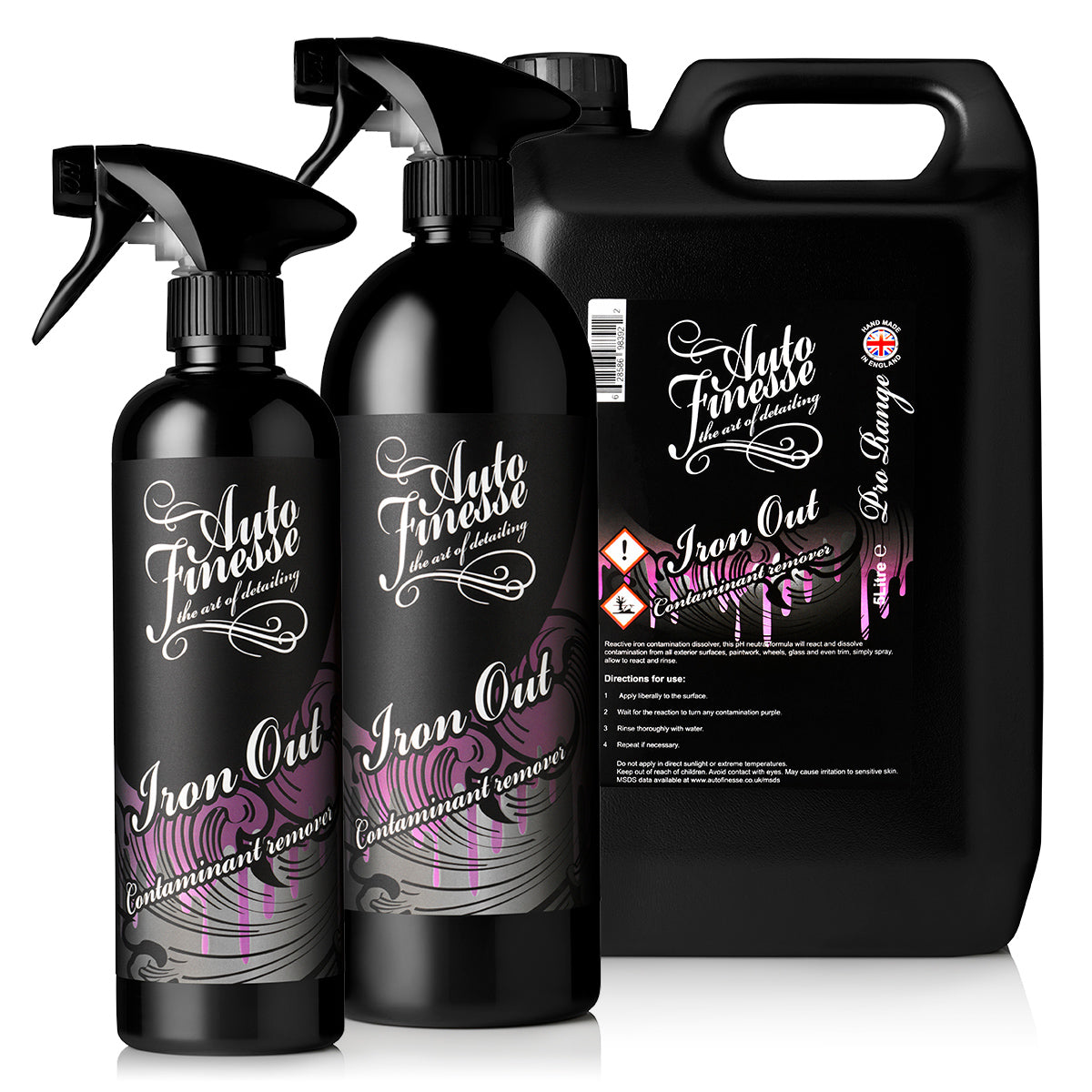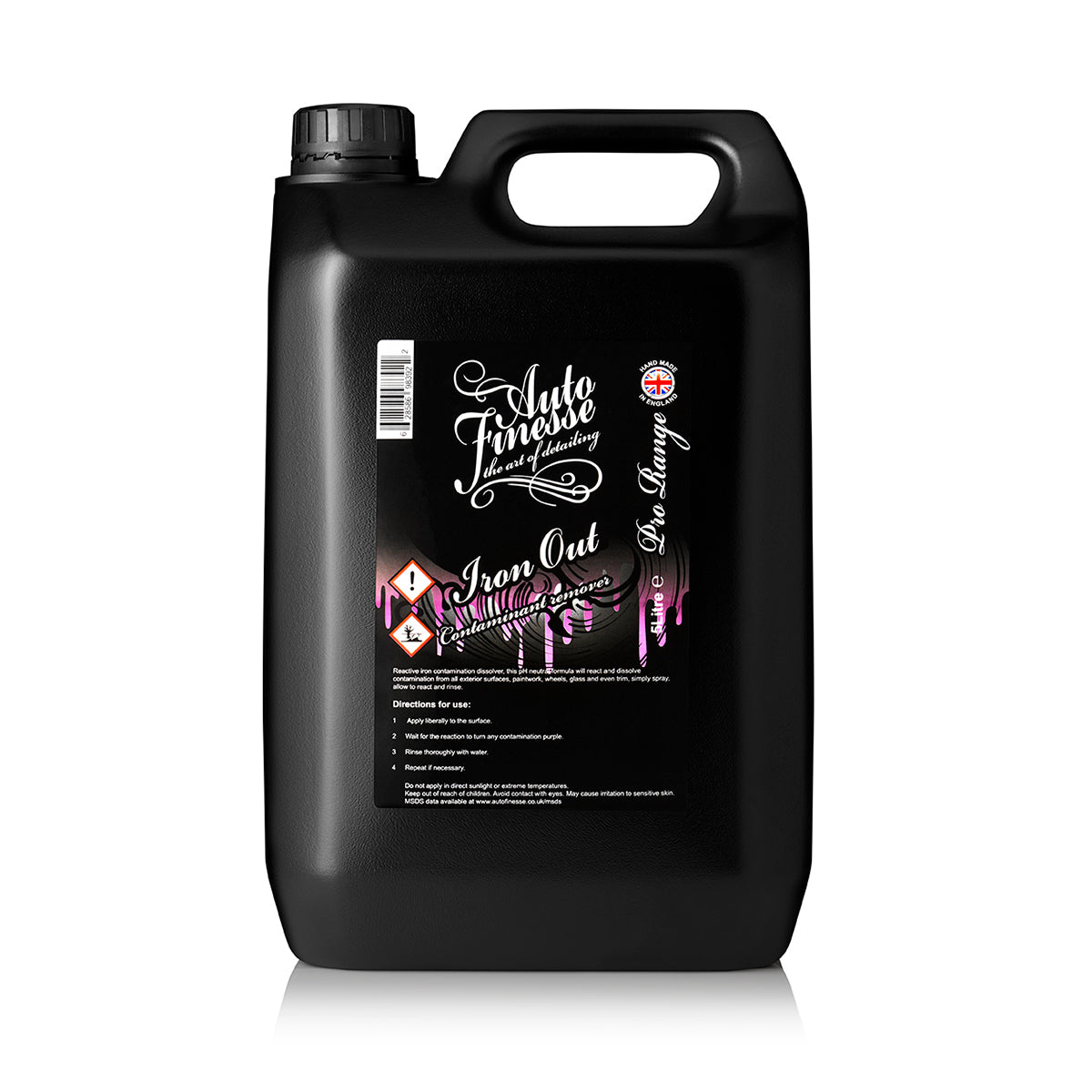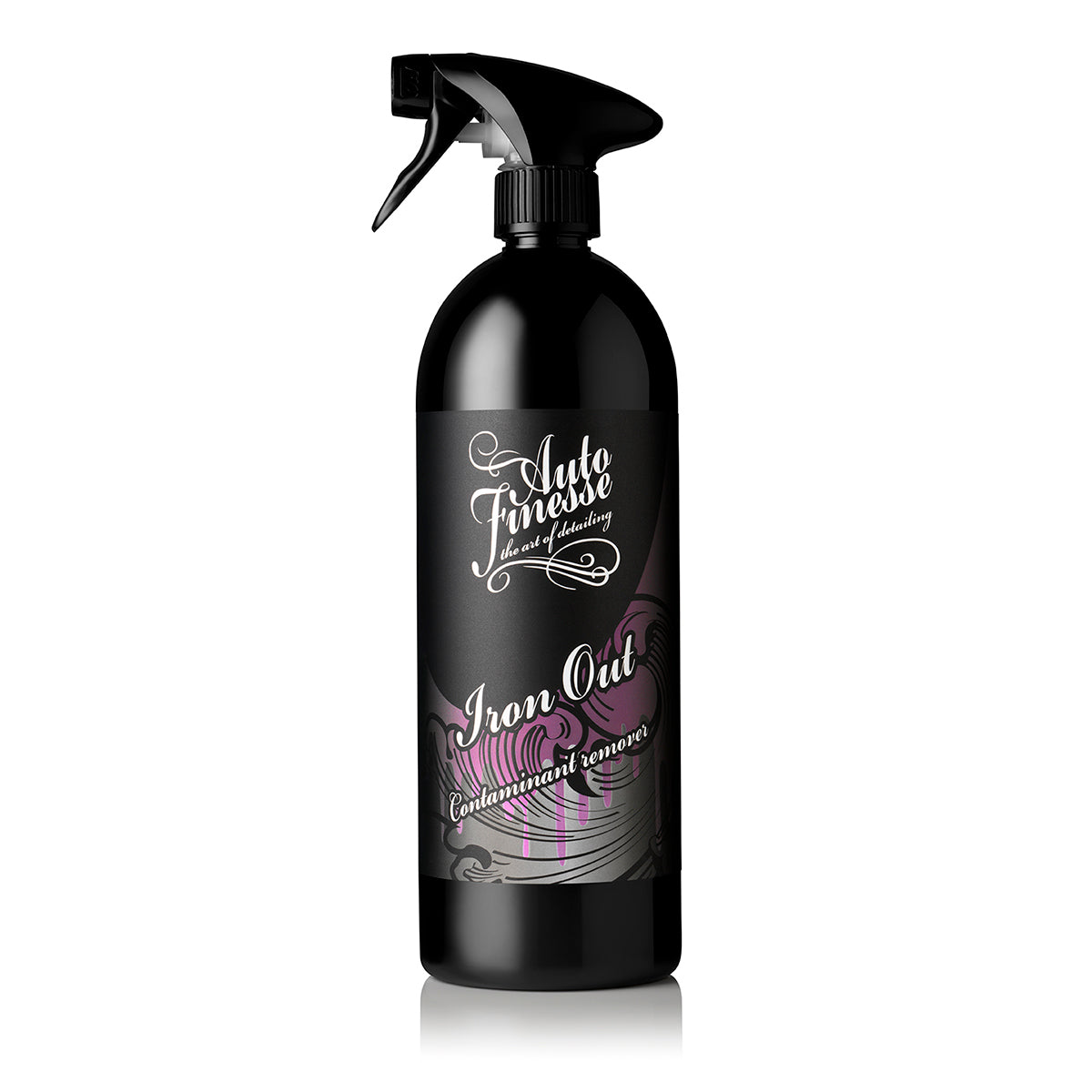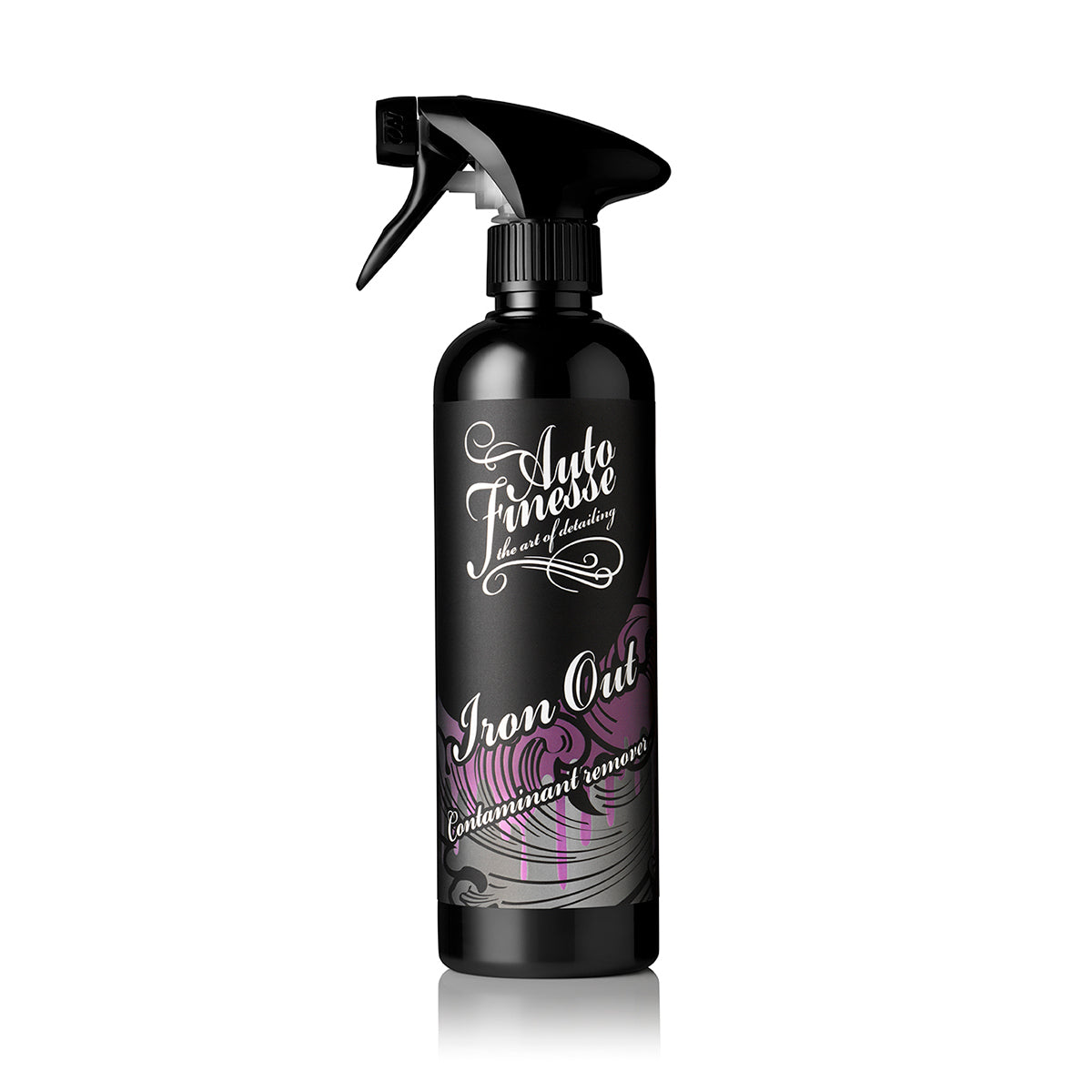

We Say
Iron-dissolving cleaners first appeared in the UK in 2010 and have since transformed the way that most detailers tackle the decontamination process. This is mainly because they reduce the need for claying, which saves time and reduces the risk of marring, which is particularly beneficial in cases where no machine polishing is planned. However, many of the early iron-dissolving cleaners were imperfect; those that reacted quickly tended to be thin and runny, meaning a lot of what you applied would run off on to the floor before it had chance to work, while those that comprised thicker gel-based formulas tended to react very slowly, and thus cost more in terms of the time required to get the job done.
In response to the drawbacks posed by these early products, Auto Finesse developed an iron-dissolving cleaner that combines their best features into a single product. Auto Finesse Iron Out comprises a thick gel-based solution that is very clingy, meaning that applied product stays where it is meant to be, rather than running off on to the floor. Furthermore, it contains a much higher concentration of the active iron-dissolving ingredient (a neutralised acid salt), which means it reacts more quickly and more thoroughly too. This has the knock-on effect of making it more expensive than many of the early products, but your time is valuable, so you should factor this in when choosing what product to buy.
Key Features
Agitation RequiredNo(See How To Use)
DilutableNo(Water:Product)
Cleaning Strength10/10(Compared To Others)
Description
Auto Finesse Iron Out is an intensive cleaner that is designed to dissolve brake dust and iron-rich contaminants upon contact. Although best suited to the cleaning of neglected wheels, it's also perfectly safe for use on other exterior surfaces in situations where iron contaminants are proving difficult to remove. Examples of such contaminants include railway dust, which can be resistant to all but the most aggressive clays, and iron-rich fallout, which can be hard to see but easy to detect with your fingertips.
The main ingredient in Auto Finesse Iron Out is a powerful neutralised acid salt. This reduces iron particles into a soluble form, making them easy to rinse away with a stream of water. As a result, Auto Finesse Iron Out is safer and less aggressive than traditional acid-based wheel cleaners, but equally as effective in terms of cleaning power. Its gel-like composition means it clings to treated surfaces with ease, extending its working time and minimising the need for agitation in all but the most extreme cases.
The main ingredient in Auto Finesse Iron Out is a powerful neutralised acid salt. This reduces iron particles into a soluble form, making them easy to rinse away with a stream of water. As a result, Auto Finesse Iron Out is safer and less aggressive than traditional acid-based wheel cleaners, but equally as effective in terms of cleaning power. Its gel-like composition means it clings to treated surfaces with ease, extending its working time and minimising the need for agitation in all but the most extreme cases.
Specification
| Agitation Required | No |
|---|---|
| Chemical Basis | Acid-based (neutralised) |
| Cleaning Strength | |
| Dilutable | No |
| Maximum Dwelling Time | 10 minutes |
| Removes Inorganic Contaminants | Yes |
| Removes Organic Contaminants | Yes |
| Safe For All Wheel Types | Yes |
| Strips Coatings | No |
| Strips Sealants And Waxes | Yes (partially) |
| pH | 6 (acidic) |
How To Use
Auto Finesse Iron Out comes pre-diluted to the correct strength for safe use on all exterior surfaces. In all cases, wash and rinse the surfaces you are going to treat in the normal way. Next, working on 1-2 wheels or 3-4 panels at a time, spray Auto Finesse Iron Out on liberally and allow up to 10 minutes for it to work; during this interval it will gradually turn purple as ferrous compounds and sintered iron particles dissolve into solution (this effect can be very pronounced, but don't panic because it's quite normal and to be expected).
Although Auto Finesse Iron Out is essentially a touchless cleaner, you can agitate it with either a brush (on wheels) or a microfibre towel (on bodywork and glass) if needs be. After 10 minutes or so, i.e. once the dark purple solution has started to dry (it's perfectly safe to let Auto Finesse Iron Out dry out, provided that you are working somewhere cool and out of direct sunlight), rinse the surfaces you have treated with a strong stream of water. Note that if the solution has dried fully you may need to use a stronger jet of water from a pressure washer to remove the residue.
After rinsing off, check the treated surfaces for residual contamination by running your fingertips over them while they are still wet. Contaminant-free surfaces should feel perfectly smooth (if your fingertips aren't particularly sensitive you can magnify your sense of touch by putting your fingers inside a cellophane wrapper first). If you can detect any grittiness then it's likely that the treated surfaces are still contaminated with non-ferrous particulates (e.g. paint overspray) and will need to be carefully clayed before any polishing is done or any protection is applied.




